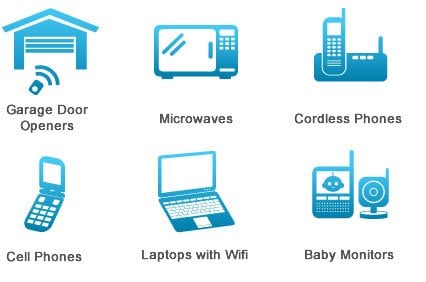Electronic devices are banned during takeoff because they emit radio waves that can interfere with airplane communications. This precaution ensures proper communication and avoids potential hazards.
Once you’ve settled into your seat on an airplane, you’ll hear the familiar announcement to turn off your mobile phones and electronic devices before takeoff. People begrudgingly comply, waiting for permission to use them again once the plane is in the air. However, there are exceptions, like when Alec Baldwin was asked to leave a plane for refusing to switch off his phone while playing a game.

Every time I hear this announcement, I wonder why I have to turn off my tablet. I’m not planning on making any phone calls during takeoff.
It turns out that the ban on cell phones and electronic devices on airplanes is not just a pointless debate about safety.
Electronic Devices Emit Radio Waves
Aviation norms around the world prohibit the use of portable electronic devices below approximately 10,000 feet.
 Radiowave emitters
Radiowave emitters
Devices like smartphones, laptops, and iPads emit radio waves that allow you to connect to the internet. Even in “Airplane Mode,” you’re not supposed to use your smartphone according to aviation regulations.
The main reason for this regulation is electromagnetic interference caused by portable electronic devices (PEDs) during takeoff. It is believed that radio transmitters, such as mobile phones and gaming consoles, can interfere with airplane communication and compromise flight safety. This applies not only to these devices but also to seemingly harmless ones like Kindle, which emit low-power radio waves that can disrupt airplane communication with the ground. The radio waves from these devices can potentially affect vital systems like radar and collision avoidance technology. The problem worsens if the devices are damaged and emit stronger radio waves or if signals from multiple devices combine.
Why Does Airplane Communication Get Affected by Radio Waves?
When you use your smartphone in a stationary place, it easily connects to a network tower through the radio waves it emits. However, when you are on an airplane moving at a high speed and thousands of feet above the ground, the distance from the network towers causes interference. This confusion between your phone and the towers leads to your phone emitting stronger radiation, which could potentially disrupt airplane communications.
Is It Necessary to Be Cautious?
In the U.S., the Federal Communications Commission (FCC) prohibits the use of mobile phones during flight. Interestingly, the Federal Aviation Administration (FAA) does not have a direct prohibition on personal electronic devices, including cell phones, on aircraft. In the past, there have even been instances when electronic devices were allowed on planes.
In 2008, Air France permitted the use of cell phones for messaging, emailing, and making calls onboard. The demand for constant connectivity has also prompted airlines to develop advanced technologies to enhance the in-flight experience while ensuring safety.
Considering everything, it is advisable to keep your smart devices in your pocket and turned off during a flight. Take the opportunity to disconnect from the digital world and enjoy the unique experience of being thousands of feet above the ground. After all, you are flying!
